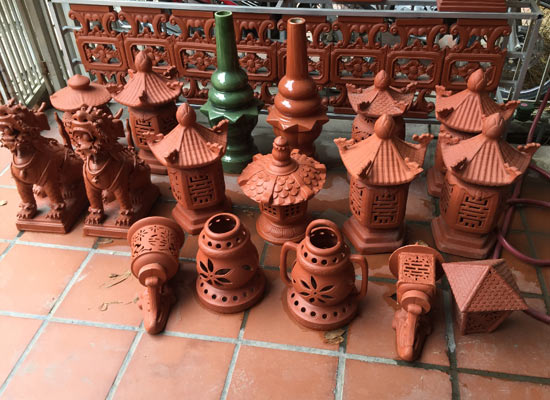
With its exports of ceramics for the countruction sector accounting for just 0.9 per cent of the global total, Vietnam has much more room to boost export of the products, according to the Ministry of Industry and Trade.
With its exports of ceramics for the countruction sector accounting for just 0.9 per cent of the global total, Vietnam has much more room to boost export of the products, according to the Ministry of Industry and Trade.
 |
| Việt Nam has much more room to boost export of ceramics for the countruction sector. — Photo xuonggomsuviet.vn |
Its Centre for Industry and Trade Information said the country was the ninth largest exporter in 2016-20, with the value growing at an average 8.2 per cent a year.
Despite COVID-19, its exports grew by 9.9 per cent last year to US$375.5 million.
Yet, Việt Nam's exports are very modest compared even to regional competitors such as Thailand, the centre said.
A study on the global ceramics market by global market research company Technavio found that the ceramics market is expected to reach $64.52 billion by 2025 driven by factors such surging demand for lightweight and high-performance materials.
A spokesperson for the centre said there is huge potential for construction ceramic exports since the material is widely used in structural details of buildings from masonry and paving to wall cladding and hollow aggregates for lightweight concrete.
Acid- and heat-resistant ceramic products are also widely used in the chemical, metallurgy and other industries, he said.
They are durable and have a long life, are made from local raw materials, come in a diverse range, meet various demands from customers, their production technology is relatively simple, and their cost is competitive, he added.
The ministry said to promote the industry, it is necessary to establish centres for processing and standardising raw materials.
But it is also necessary to take advantage of tariff preferences offered by free trade agreements, import modern production technologies and machinery and expand global market share, it said.
Ceramic products are made in a number of craft villages in Bình Dương and Đồng Nai provinces and Hà Nội, with Bát Tràng Ceramic Village in Hà Nội’s Gia Lâm District being the oldest and most famous in the country.
(Source:VNS)





